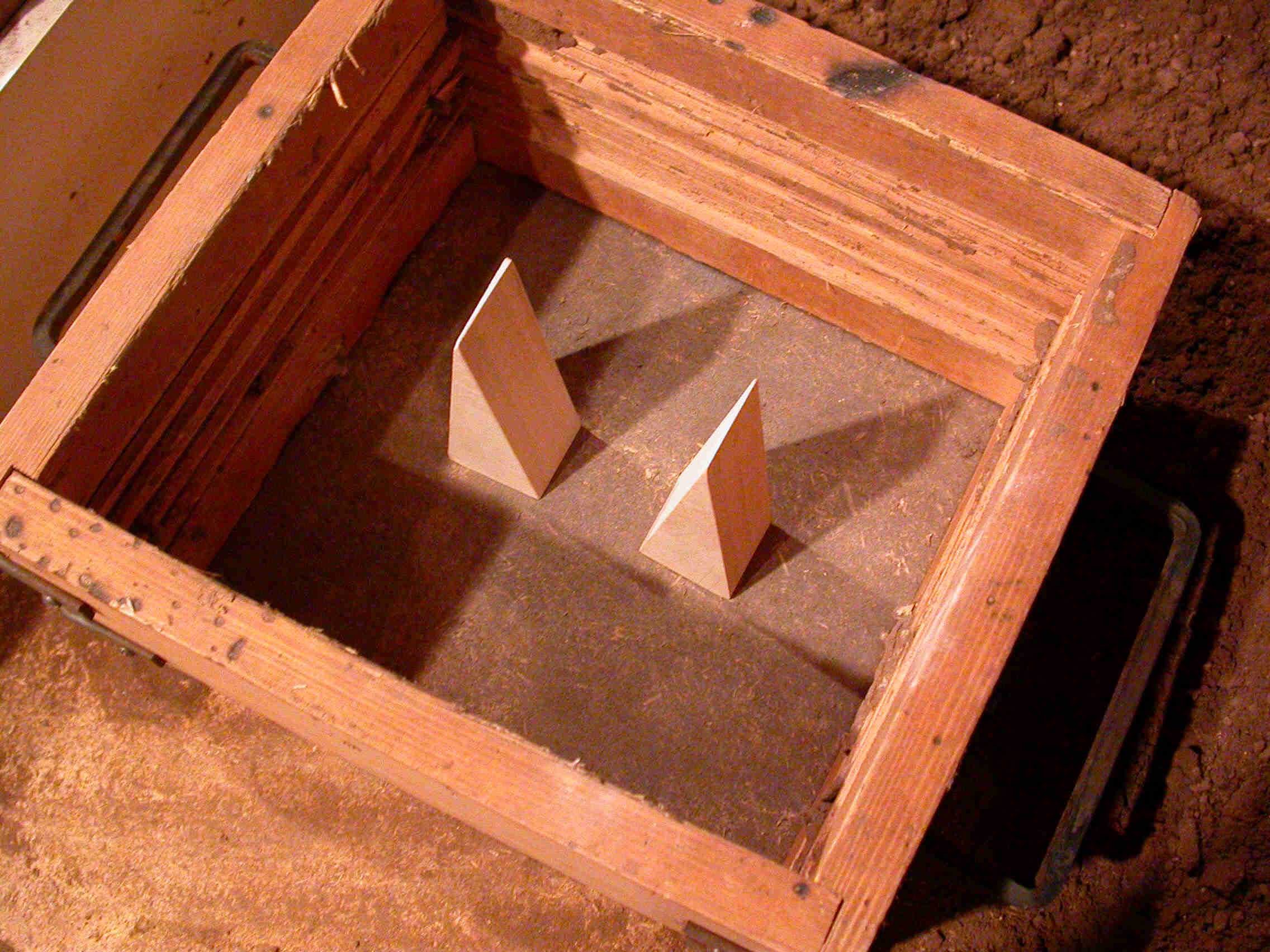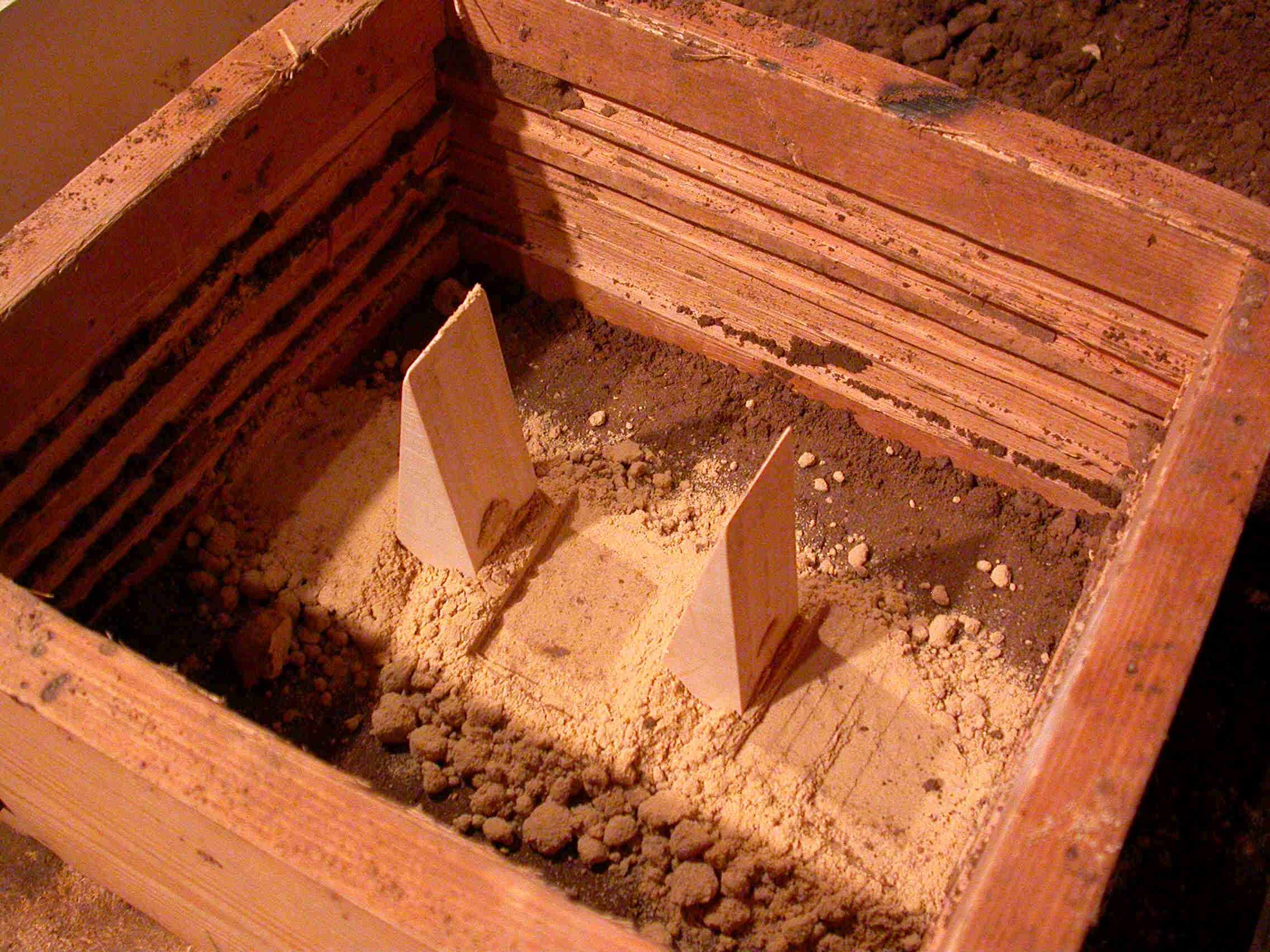
ALL MATERIAL COPYRIGHT KEVIN SCOTT 2011. LINKS TO THIS SITE ARE WELCOME BUT DO NOT COPY MATERIAL FROM THIS SITE TO ANY OTHER WEBPAGE.
If you find this site useful, please support it by making a donation of $1 to help maintain and develop it. Click on the PAYPAL DONATE button to do this safely. But there is no obligation - please avail yourself of the information and facilities of the site at no charge.

Greensand casting involves packing wetted casting sand around the pattern, withdrawing the pattern and replacing it with metal.
A number of factors have to be taken into account to obtain a satisfactory result. The precise sequence
is as follows:
(a) Casting boxes are in pairs which are registered together by means of pins on the upper box (called the cope)
and eyes on the lower box called the drag. The cope & drag can easily be made in the workshop. A series of slots
are milled horizontally in the inside surfaces to improve the grip between sand and box. The lower box, the drag, is placed
on a smooth surface with the eyes lowermost. The patterns are arranged within the box allowing at least 15mm between them and between
them and wall so the box.
(b) The patterns are dusted with parting sand held in a muslin bag. (Parting sand is a fine dry silica sand with very low cohesion. It
is used wherever surface are intended to part leaving the casting sand intact. Care should be taken in using parting sand as it may
have an adverse effect on health if the particles are breathed.
(c)For the best finish on the cast product, it is preferable to use a fine oil-based casting
sand next to the pattern and a cheaper water based casting sand to fill the box. In the UK, both oil- and water based sands are
available from John Winter & Co Limited or
Engineering & Foundry Supplies(Colne)Ltd Oil sand is used as supplied, but
the greensand needs to be wetted to the correct degree. The best test for correct moisture level is carried out by compressing a sample of the sand in the hand
and then breaking the lump so formed. If the break is clean, with sharp edges, then the water level is correct.

The fine oil-sand is pressed around the patterns and the greensand is applied in layers, each one rammed firm using a wooden ram with a flat end surface. The ramming needs to be even and thorough so that there are no voids in the sand and it is pressed fully to the surface of the patterns. It is possible to ram up a drag too tightly, though, with the result that the patterns are difficult to remove or damage is done to the mould in doing so. Sand is added in layers each successively rammed until the drag is full.